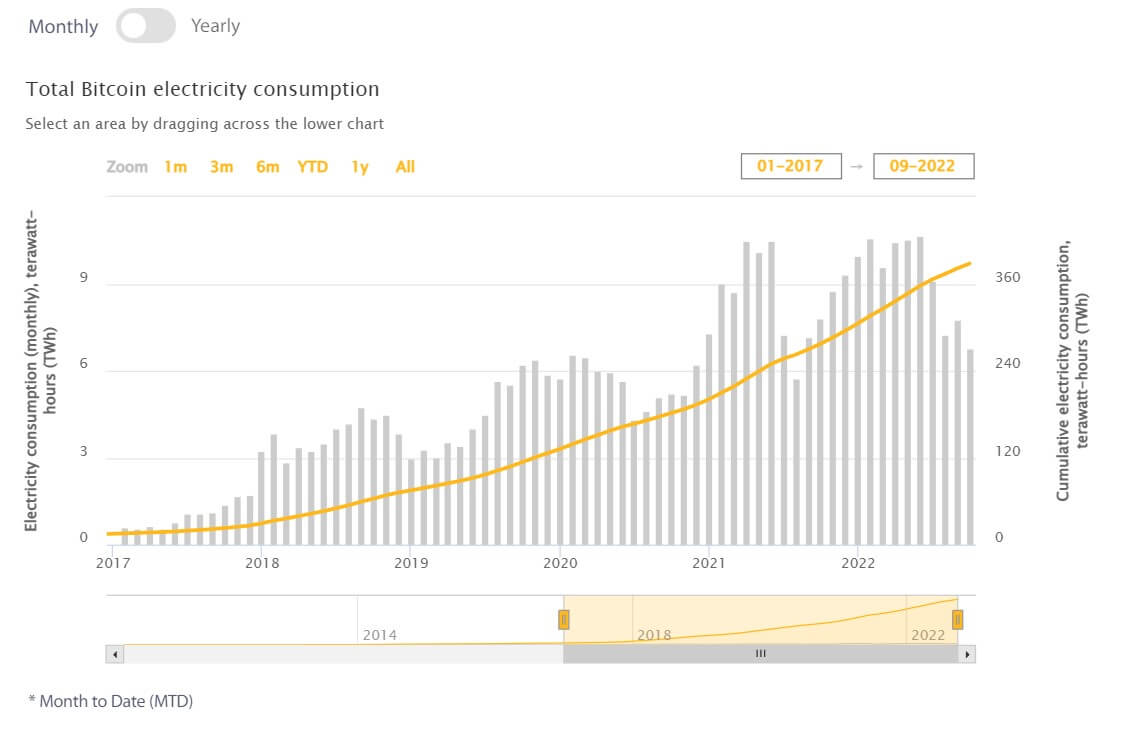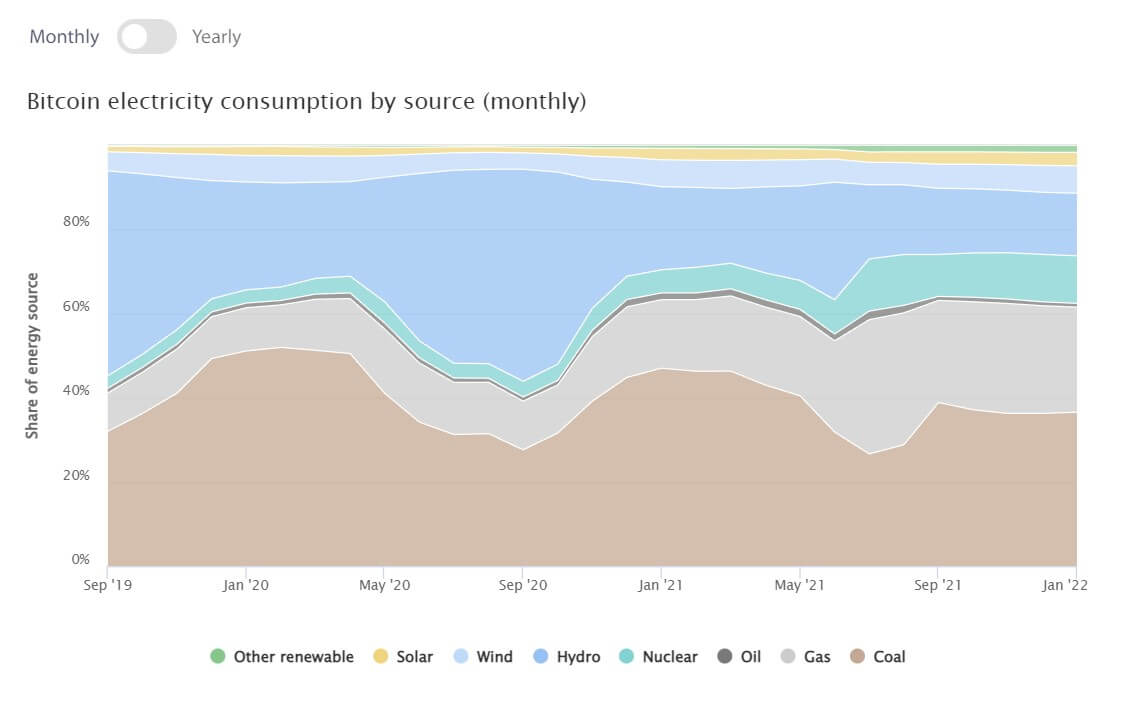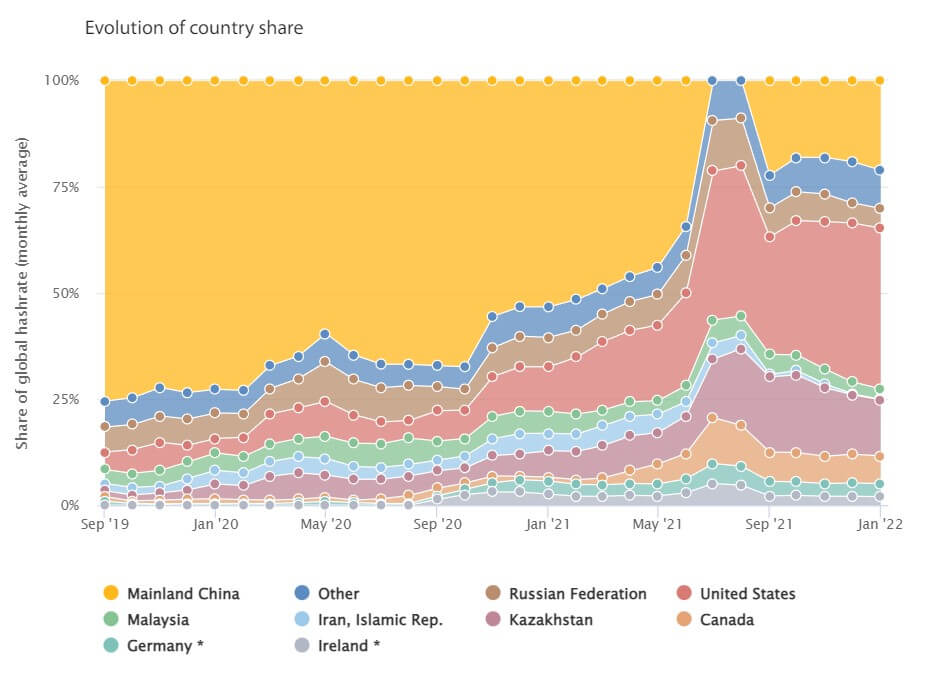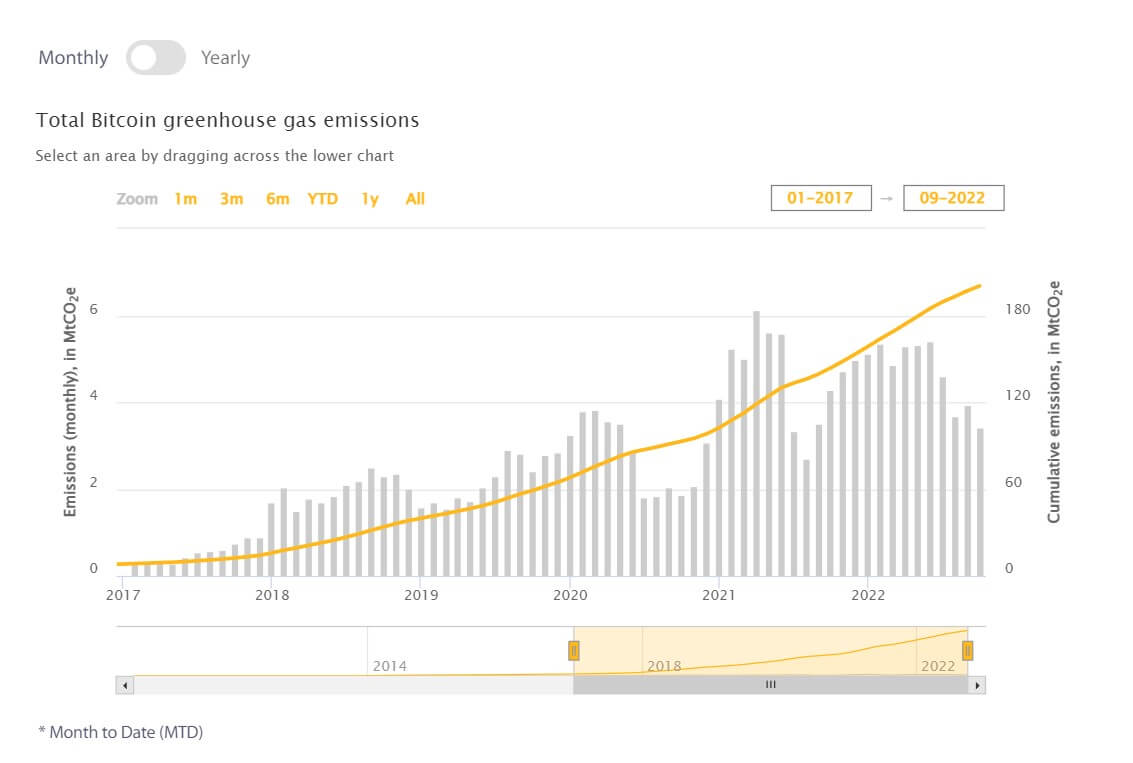Cambridge University analysts reveal what resources are being used to mine Bitcoin
The Bitcoin mining industry has changed significantly over the past few years, with natural gas and nuclear power increasing most notably in powering crypto farms. This data was shared the day before by the Cambridge Centre for Alternative Finance (CCAF), whose staff released a major report updating one of the most popular metrics of BTC network energy consumption, the Cambridge Bitcoin Energy Consumption Index (CBECI). We tell you more about the situation.

It should be noted that the topic of Bitcoin miners’ energy consumption has proven to be extremely popular lately. The fact is that at the beginning of the month, the Etherium network switched to PoS, as a result of which miners with their video cards and ASICs were replaced by validators. At the same time, the blockchain began to consume more than 99 percent less power than the PoW version of the network, so the power consumption of the BTC blockchain became much more noticeable globally.

Selling Tesla for bitcoins
That said, the topic of excessive electricity consumption by Bitcoin miners has been raised before. In particular, in May 2021, Tesla stopped accepting BTC as a means of payment for its cars, arguing that the cryptocurrency had a bad impact on the environment.
How does Bitcoin mining work?
According to Cointelegraph sources, fossil fuels like coal and natural gas accounted for nearly two-thirds of all Bitcoin network consumption as of January 2022, exceeding the 62 per cent mark.
Consequently, renewables accounted for 38 per cent of grid consumption. Coal alone accounted for almost 37 per cent of the cryptocurrency’s total electricity consumption at the start of 2022. Among renewable sources, hydropower was the largest, accounting for around 15 percent.

Bitcoin network energy consumption
Although Bitcoin mining relies heavily on coal and hydropower, the share of these sources in the total BTC energy mix has been declining over the past few years. In 2020, coal accounted for 40 per cent of mining. Hydropower’s share, meanwhile, more than halved from 2020 to 2021, falling from 34 percent to 15 percent.
😈 YOU CAN FIND MORE INTERESTING THINGS FROM US AT YANDEX.ZEN!
But the role of natural gas and nuclear energy in BTC mining has increased markedly over the past two years. The share of gas in the coin’s network energy mix has increased from 13 percent in 2020 to 23 percent in 2021, while the share of nuclear energy has increased from 4 percent to nearly 9 percent in the same time frame.

Top energy sources for the Bitcoin network
According to analysts at Cambridge University, the mass migration of Chinese miners following the country’s ban on cryptocurrency mining was the main reason for the dramatic fluctuations in Bitcoin’s energy consumption patterns in 2020 and 2021. The government crackdown has led to a significant reduction in the share of hydropower in the cryptocurrency’s energy mix.
Here’s a commentary from experts, with which they share their view of the situation.
The Chinese government’s ban on cryptocurrency mining and the consequent migration of miners to other countries has had a negative impact on Bitcoin’s environmental footprint.
However, as experts revealed in the spring of 2022, Chinese miners are still operating, albeit covertly. As Cambridge Digital Assets Programme reported at the time, Chinese computing hardware owners accounted for 21 percent of Bitcoin's hash rate. Read more about this in a separate article.

Bitcoin hashrate by country
The study also found that the greenhouse gas (GHG) emissions associated with Bitcoin mining amounted to 48 million metric tons of carbon dioxide equivalent as of September 21, 2022. This is 14 per cent lower than the projected greenhouse gas emissions in 2021. The authors of the study estimate that the cryptosphere’s current level of greenhouse gas emissions is about 0.1 per cent of the global total.

Greenhouse gas emissions from Bitcoin mining
As we can see, a significant proportion of the mining industry is still operating at the expense of the environment. This is an important argument for many big investors and Bitcoin critics. In addition, earlier this month, Etherium completely “dropped” all such accusations: as we noted earlier, the altcoin completed its transition to the Proof-of-Stake consensus algorithm, which reduced the network’s energy consumption by 99.9 percent.
We believe that the Bitcoin network is unlikely to move to another Proof-of-Stake type consensus algorithm that can save power, as it requires the support of blockchain community members and a lot of development and testing resources. Over time, however, many miners will clearly switch to renewable energy sources, which will be particularly relevant in Western countries. Accordingly, this could improve the cryptocurrency's reputation and divert attention away from it from regulators, who earlier this year opposed BTC mining in its current form.
For even more on crypto and mining, check out our chat room. There we will talk about many other topics from the world of blockchain and decentralization.















